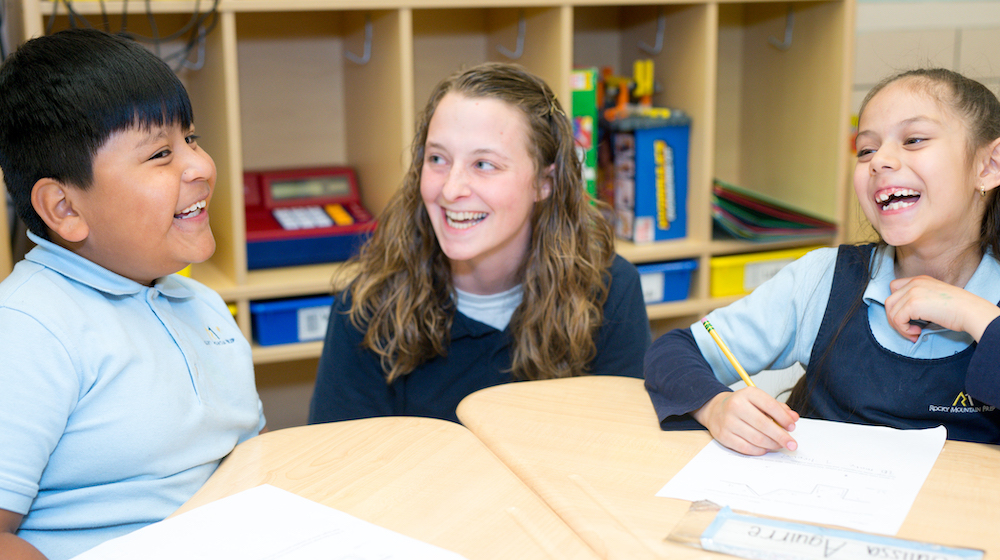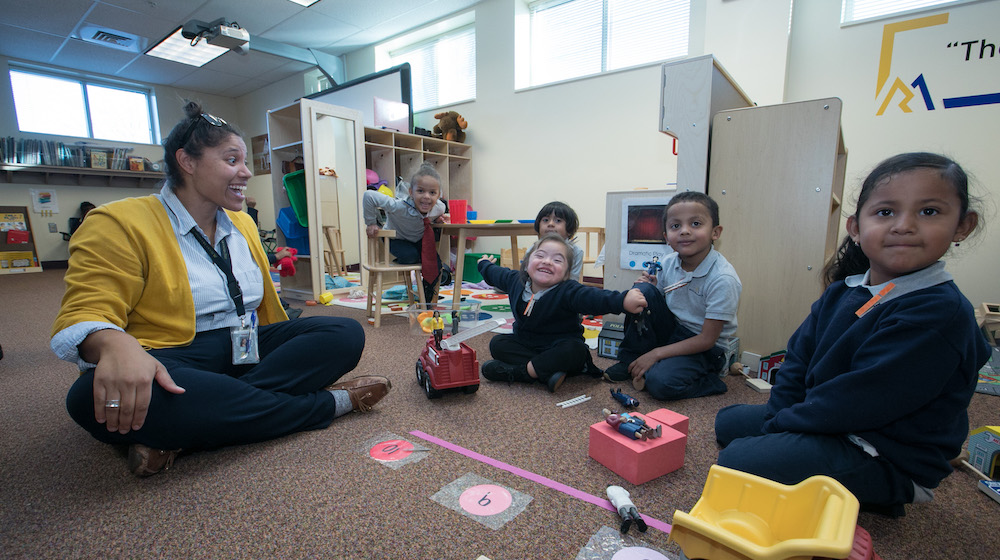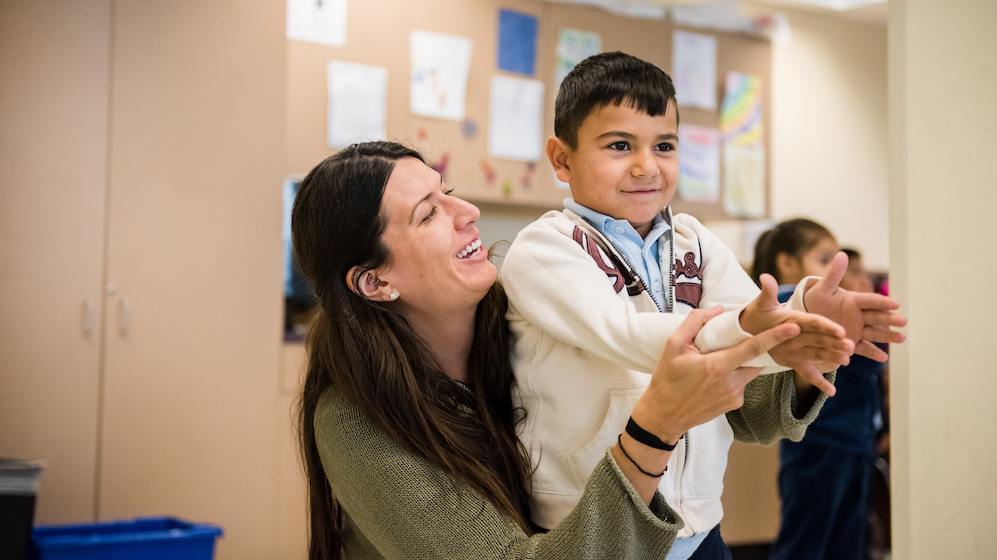With two weeks left in the school year, we know many students and families are wanting to finish the year strong and are looking for ways to reinforce those last days of learning before summer break!
We turned to Laura Haller, a teacher at RMP Southwest, to get the tricks of the trade for helping your student’s success with remote learning as we wrap up this school year.
1. Set Clear Expectations
As teachers, one of the most important lessons you can learn is that if something’s not going well in the classroom, you’ve been unclear and you need to set better expectations. The quicker you learn that you’re responsible for every small part of your classroom environment, the stronger a teacher you become!
Setting clear expectations has a couple of important components:
- Setting/Structure: How or where do you want students to complete their work? What materials do they need to complete the activity?
- Participation: Do they need to be turning pages on their book, clicking the correct answer, or writing their response to reading? Is it independent or are they working with a sibling or parent to complete?
As parents, you already do this all the time! But here are a few examples of ways you can embody this as your student’s teacher at home:
| Example | Clear Expectations |
| It’s almost lunchtime and your student is losing steam. Their attention is scattered and they’re starting to whine about finishing their math pages. |
Show Empathy & Praise: “I’m sorry you’re feeling tired and hungry. I am too! But you’ve already worked so hard and are halfway through the page! You’ve got this!” Set Expectations: “Focus your attention to finish the last three problems, then we can eat lunch together and take an hour recess outside.” Why is it powerful?
|
| After lunch, your student sits down to watch some Netflix. You’ve already warned them that they need to start their independent reading but they’re not listening... and you’ve got to clean up lunch and put a load of laundry in! | Set a timer for 5 minutes.
Set Expectations: “[Scholar Name], you have 5 minutes to finish watching your show. When the timer goes off, turn the TV off, find a book, and start reading by yourself. When I’m done putting the laundry in I’ll join you and we can read together.”
Hold them to the Expectations: If they follow your directions → “[Scholar Name], nice job! I’m so proud of how independent you are. Great job listening the first time!”
If they continue to watch TV → “[Scholar Name], the direction was to turn off the TV and begin independent reading. You did not follow the direction and now [consequence*].”
*Provide a natural consequence for not following instructions right away -- a student needs to read 5 more minutes independently before they can read with you, a student needs to complete a chore before they can take a break, etc. Give a consequence that fits for your family and your parenting style.
Why is it powerful?
|
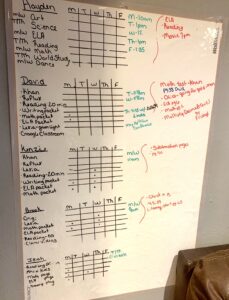
Stacy G., a parent of four students at RMP Southwest, made a checklist for what her students need to complete each day. She also added notes about what their teacher asked them to work on that week. Stacy’s advice is to keep trying routines until you find one that works for your family.
2. Create a Routine
Set a schedule and stick to it the best that you can. The schedule doesn’t have to be intense or minute by minute, but it does need to be predictable.
As teachers, we spend the first few weeks setting routines for everything - how to move from the carpet to your desk, how to get your materials out, how to ask for a drink of water, how to take a break, how to walk in the hallway. We get super clear about the details of each routine.
It can be as simple as FIRST, THEN or WORK, then PLAY. First, we’re going to complete these 10 math problems, then we can play Connect 4. Now it’s time to read for 20 minutes, then we can go for a walk. Next, you’ll read the passage and answer the questions, then you can get on your tablet for 20 minutes.
Or it can be chunked into parts of the day! In the morning we complete our reading tasks. After lunch and a long recess, we complete our math tasks.
You can set an hourly schedule that works for your family to add additional structure.
No matter what your schedule works best for your family make sure you’re always finding time to play, be creative, and spend time outside! This is vital to your student’s physical and mental well being. Plus, it will help break up the day and give them the break times that they need.
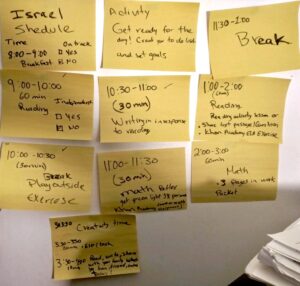
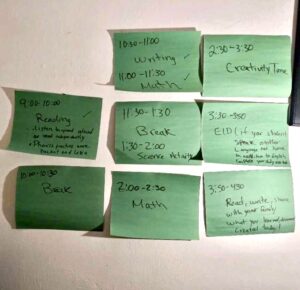
Olga O., a parent of two students at RMP Southwest, made a schedule for her students with each content area on construction paper.
Extra Tip: Use a timer! Timers are helpful for setting clear expectations but also help the student know what they’re working for (and that it won’t last forever). It’s also a great way to make a game out of a task “I bet you can’t finish these three problems in three minutes.”
3. Use Incentives
At school we weave incentives throughout the day. Students earn class parties, shoutouts, opportunities to share, class jobs, and naturalized breaks. Integrating incentives at home will be powerful as well.
Incentives don’t always have to be tangible, but they can be. Here are some ways to incentive your student at home for completing their work:
| Tangible | Non-Tangible |
|
|
4. Give Grace
Most importantly, give yourself and your students grace during this process.
It’s rare that a teacher goes home and says “that was an amazing day and everything went perfectly!”
Teachers often go home with a list of things they’ll do to improve the next day. And if they crumbled after every tough day, they wouldn’t make it.
Remote learning is no different! Everyone is learning and adjusting.
It’s okay if you get off schedule. It’s okay if you have to spend time working through your student’s emotional needs instead of finishing that page of math problems. It’s okay to let kids be independent and take a minute to take a quick adult break to catch your breath. Have high expectations for yourself and your students, but be present and do what’s best for you and your family.


